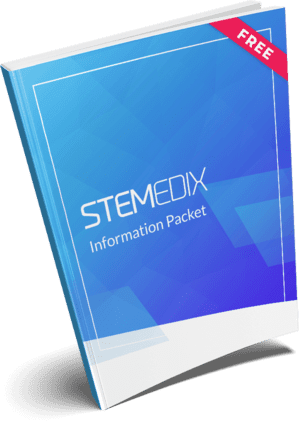
by admin | Sep 16, 2020 | Mesenchymal Stem Cells, Rheumatoid Arthritis, Stem Cell Therapy
Rheumatoid arthritis causes chronic inflammation of multiple joints throughout the body. This joint inflammation eventually causes the cartilage and bone to break down, and the tendons and ligaments surrounding the joints stretch and become deformed. Consequently, people with rheumatoid arthritis experience pain and loss of function in affected joints.
Unfortunately, rheumatoid arthritis is not just a disease of joints. Rheumatoid arthritis also causes systemic inflammation. People with rheumatoid arthritis commonly experienced fevers, weight loss, and chronic fatigue. Many patients report being achy or stiff apart from joints directly affected by arthritis. Rheumatoid arthritis can cause bone loss, muscle weakness, skin lesions, and kidney disease. Patients may also experience lung, heart, and vascular diseases.
The cause of rheumatoid arthritis is unknown; however, since it is an inflammatory disease, the main treatment for rheumatoid arthritis is an anti-inflammatory medication. Some lifestyle changes may help to ease some of the symptoms but most physicians initially recommend using a disease-modifying antirheumatic drug or DMARD soon after rheumatoid arthritis is diagnosed. DMARDs can modestly reduce symptoms of rheumatoid arthritis and help reduce the risk of patients developing debilitating joint abnormalities. DMARDs include drugs such as methotrexate or biologics such as infliximab or tofacitinib. Patients with rheumatoid arthritis usually also must take glucocorticoids, i.e. steroids to acutely control inflammation. Unfortunately, these agents have considerable side effects, especially when taken for long periods of time. Moreover, the treatments are not curative. As such, researchers are still looking for better treatments for rheumatoid arthritis.
Scientists recently conducted a prospective Phase 1/2 study of umbilical cord mesenchymal stem cells in patients with rheumatoid arthritis. They selected 64 patients with rheumatoid arthritis between the ages of 18 and 64. Volunteers received an intravenous infusion of mesenchymal stem cells and were followed for three years. At both the 1 and 3 years follow up appointments, the rheumatoid arthritis patients treated with mesenchymal stem cells had substantially lower levels of the blood markers that indicate rheumatoid arthritis (namely C-reactive protein, elevated erythrocyte sedimentation rate, rheumatoid factor, and anti-CCP antibody). The test of physical function also significantly improved at 1 and 3 years after stem cell treatment [Health Index (HAQ) and Joint Function Index (DAS28)]. The treatment was also safe, and no serious adverse effects were reported.
The results of this stem cell clinical trial are particularly remarkable because patients received only one intravenous treatment and enjoyed at least three years of improvement in their disease both in the blood markers but also in symptoms and physical functioning. Although not a cure, this study shows the apparent safety of mesenchymal stem cell treatment and the impressive benefits to allow patients to consider researching stem cell therapy as an alternative option for their rheumatoid arthritis symptom management. Indeed, if additional larger studies confirm these impressive results, umbilical cord mesenchymal stem cell treatment may become a possible standard of care in the treatment of rheumatoid arthritis in the future.
Reference: Wang L, Huang S, Li S, et al. Efficacy and Safety of Umbilical Cord Mesenchymal Stem Cell Therapy for Rheumatoid Arthritis Patients: A Prospective Phase I/II Study. Drug Des Devel Ther. 2019;13:4331-4340. Published 2019 Dec 19. doi:10.2147/DDDT.S225613

by admin | Jul 9, 2020 | Multiple Sclerosis, Mesenchymal Stem Cells, Stem Cell Therapy
Scientists have long realized that multiple sclerosis is an inflammatory disease, and that the immune system, in a manner, attacks the brain and spinal cord. These inflammatory lesions cause patients to have severe neurological symptoms. Therefore, treatments for multiple sclerosis have focused on controlling the immune system.
There are current treatments of care for MS patients to manage their symptoms. They can help minimize the severity of the disease, but they may cause serious side effects. Consequently, researchers are constantly looker for newer, safer, less expensive alternatives.
While the precise cause of MS is still unknown, multiple sclerosis lesions contain high levels of an immune cell, specifically CD4+ T cells. These T cells become active in the central nervous system and interfere with the function of other T cells (regulatory T cells). Simply put, whatever causes MS creates abnormal regulatory T cells; healthy regulatory T cells are important for maintaining a balance between helpful and harmful immune system functions.
In the scientific research journal Oncotarget, Yang and co-authors showed experimentally for the first time that umbilical cord-derived mesenchymal stem cells could repair defective regulatory T cells in patients with MS.
The scientists collected mesenchymal stem cells from umbilical cord tissue (the tissue that is usually thrown away as medical waste after live birth). They also collected peripheral blood mononuclear cells (i.e. T cells, B cells, natural killer cells, and monocytes) from patients with MS and healthy volunteers. Stem cells and peripheral blood mononuclear cells were combined in the lab for 3 days. After incubation, samples with stem cells had a higher proportion of regulatory T cells, and those regulatory T cells had greatly improved their function. In fact, stem cell treatment made the defective regulatory T cells function much like regulatory T cells from healthy volunteers.
More work must be done to take this technology from the lab and into the clinic, but the proof of concept is remarkable. Stem cell treatment has been shown to be safe in scores of clinical trials. Thus, if umbilical cord-derived mesenchymal stem cells can improve regulatory T cell function in patients with MS, the impact could be beneficial to help improve multiple sclerosis symptoms.
Reference: Yang, H., et al. (2016). Umbilical cord-derived mesenchymal stem cells reversed the suppressive deficiency of T regulatory cells from peripheral blood of patients with multiple sclerosis in a co-culture – a preliminary study. Oncotarget 2016; 7:72537-72545.

by admin | Jun 29, 2020 | Multiple Sclerosis, Mesenchymal Stem Cells, Stem Cell Therapy
Multiple sclerosis is an inflammatory disease of the brain and spinal cord. The immune system mistakenly attacks the covering of nerve axons called the myelin sheath. Just as an electrical cord that has lost its insulation cannot work properly, so too is it with nerve cells that have been destroyed by MS. Unfortunately, when electrical signals (action potentials) cannot move through axons, it causes neurological problems and disability. People with MS may lose the sense of touch, the sense of sight, the ability to move or walk, and the ability to control bowel or bladder function.
While treatments for MS are intended to reduce inflammation, no treatment has been developed that can repair damaged nerve cells. Scientists recently reviewed the status of stem cell clinical trials to treat multiple sclerosis. The results are encouraging.
No fewer than 8 clinical trials have shown that mesenchymal stem cells can be safely used in patients with MS. Moreover, the phase 2 clinical trials within this group showed that various stem cell treatments reduced the severity of MS. This is especially important because mesenchymal stem cells actually reduced the number of lesions (areas of inflammation and injury) in patients with MS compared to placebo.
Importantly the review determined stem cells were able to improve MS disease and nerve destruction regardless of whether the stem cells were collected from fat tissue, umbilical cord, or bone marrow. Stem cells retrieved from fat (i.e. adipose) reduced MS relapses and delayed the progression of the disease. Likewise, fat-derived stem cells improved sexual satisfaction and improved bowel control 12 months after treatment.
Why are the results of fat-derived stem cells so exciting? Because bone marrow can be difficult to access and umbilical cord tissue must be collected from donors. On the other hand, virtually everyone has excess fat on their bodies. This fat can be safely and easily removed with a simple extraction such as liposuction. A patient’s own fat cells can be removed, processed, and re-infused as stem cell treatment. When someone uses their own stem cells, there is no risk that the body will reject the infusion (as could theoretically happen to donor stem cells).
These results are exciting and welcome information for those who suffer from multiple sclerosis. As larger clinical trials are performed and previous results are replicated, we may see an increase in stem cell treatment options to help manage the symptoms of multiple sclerosis.
Reference: Bejargafshe, M., et al. (2019). Safety and efficacy of stem cell therapy for treatment of neural damage in patients with multiple sclerosis. Stem Cell Investigation. 2019; 6:44.

by admin | Jun 25, 2020 | Neurodegenerative Diseases, Mesenchymal Stem Cells, Stem Cell Research
As the name suggests, neurodegenerative diseases are a disease of the nervous system in which nerve cells (i.e. neurons) become dysfunctional and die. As more nerve cells die, certain brain functions slow, change or stop. Alzheimer’s disease, Parkinson’s disease, Huntington’s disease and Amyotrophic lateral sclerosis (ALS) are examples of debilitating and even fatal neurodegenerative diseases. There are no cures for these diseases, but symptom management is the primary focus for patients seeking treatment options.
Neurodegenerative diseases are an attractive target for regenerative medicine. The approach makes sense intuitively; if brain cells are inflamed, dysfunctional, and dying, can mesenchymal stem cells be applied as a targeted approach so that they may differentiate into new brain cells and release all the helpful substances stem cells are known to release. Many researchers share this optimism and believe in the promise of stem cells as a treatment for neurodegenerative diseases. Indeed, Drs. Joyce and coauthors discuss what steps have already been taken to develop stem cells into a potential treatment for neurodegenerative diseases.
The authors describe scientific studies that show how mesenchymal stem cells “promote endogenous neuronal growth, decrease apoptosis and regulate inflammation.” In other words, stem cell transplantation supports nerve cell growth, decreases cell death, and reduces the damaging inflammation that is seen in some neurodegenerative diseases like multiple sclerosis.
According to the scientists, stem cells “can mediate modification of the damaged tissue microenvironment to enhance endogenous neural regeneration and protection.” This means that stem cells can make the area around the diseased brain more favorable to nerve cell growth and development. Stem cells create a protective environment for nerve cells to live and operate.
Clinical trials that study the effects of stem cells in neurodegenerative diseases are progressing. Some studies show that stem cells might be able to slow the rate at which muscle strength declines and are considered safe for those with ALS. Likewise, patients with Huntington’s disease showed motor and cognitive improvements two years after receiving a stem cell transplant into the damaged region of their brains. Moreover, stem cells transplanted into patients with Parkinson’s disease were found to be alive and well 10 years after transplantation. Perhaps more importantly for patients, stem cells provided relief of Parkinson’s disease symptoms.
As of now, stem cell treatments for neurodegenerative diseases can be directed to the targeted tissues with administration techniques such as intranasal or intrathecal injections to bypass the blood-brain barrier. While these injections have been shown time and again to be safe, patients and their providers must consider the process and their safety. Continued research is ongoing and those seeking an alternative option should do their research and discover how regenerative medicine may potentially help them manage their symptoms.
Reference: Joyce, N., et al. (2010). Mesenchymal stem cells for the treatment of neurodegenerative disease. Regenerative Medicine. 2010. Nov; 5(6): 933-946.

by admin | Mar 26, 2020 | Autoimmune, Mesenchymal Stem Cells
The human immune system can be one of our biggest assets or
one of our greatest foes. The immune system protects us against foreign
invaders like viruses and bacteria. It is essential for helping us maintain
immunity over a lifetime, whether from immunizations or previous infections. We
could not live without our immune systems.
On the other hand, the human immune system is the cause of
numerous diseases. Autoimmune
diseases like multiple sclerosis, ulcerative colitis, systemic lupus
erythematosus, and Crohn’s disease are caused by an immune system that
mistakenly attacks our own tissue. Organ and bone marrow transplants fail
because the body’s immune system rejects the transplant. When the immune system
is functioning normally, it is life-sustaining; however, when the immune system
falters, it can cause serious disease, suffering, and even death.
Compared to other diseases, the treatments for autoimmune
diseases and other diseases that involve the immune system are limited. Doctors
can prescribe steroids to knock down the immune response. These powerful drugs
can control disease flareups, but they aren’t a cure. Moreover, steroids cause
terrible side effects when taken long-term.
While there have been some recent developments in the treatment of certain autoimmune diseases (e.g. disease-modifying drugs for inflammatory bowel disease), medications are still limited. That is why scientists are actively studying the immune-modulating power of mesenchymal stem cells.
Mesenchymal stem cells exert a number of beneficial effects on the cells of the immune system. Mesenchymal stem cells can suppress T-cells, B-cells, dendritic cells, and natural killer cells (cells that participate in autoimmune diseases). Likewise, mesenchymal stem cells induce and affect the action of regulatory T-cells. This can help fine-tune the immune system, potentially shifting the balance from harmful to helpful immune system function.
Mesenchymal stem cells have been shown to be effective in various Phase I and Phase II clinical trials to treat multiple sclerosis, Crohn’s disease, lupus, ulcerative colitis, and even diabetes. While the clinical trials are often small—15-40 patients—the effects are impressive. Furthermore, treatment with mesenchymal stem cells is consistently safe; in study after study, the risk of serious adverse events is vanishingly small.
As with most fields of medicine, these clinical trials will need to be replicated in larger, Phase III trials. That being said, some large trials have already been conducted with favorable results. Perhaps the best example of a large trial testing the effect of mesenchymal stem cells on immune system function is in the field of transplantation medicine. The prestigious Journal of the American Medical Association (JAMA) published a clinical trial of 159 patients undergoing kidney transplants. Stem cell treatment reduced the incidence of kidney rejection, decreased the risk of opportunistic infection, and was associated with better kidney function 1 year after treatment.
The results from dozens of clinical trials suggest mesenchymal
stem cells are powerful modulators of immune cell function and have the
potential to one day be tools to treat diseases caused by the immune system. We
anxiously await further results from large, Phase III trials.
Reference: Gao, F., et al. (2016). Mesenchymal stem cells and immunomodulation: current status and future prospects. Cell Death & Disease. 2016, Jan; 7(1): e2062.

by admin | Mar 19, 2020 | Multiple Sclerosis, Mesenchymal Stem Cells
Multiple sclerosis is a chronic neurological disease that
affects the brain and spinal cord. In multiple sclerosis, an immune reaction
breaks down the covering around neuronal axons, myelin. Depending on where in
the brain or spinal cord this inflammation occurs, patients with multiple
sclerosis may experience weakness, a lack of sensation, double vision, difficulty
walking, difficulty with balance, problems with urination, dizziness, and/or
pain. Over time, patients with multiple sclerosis require assistive devices
such as canes or wheelchairs to get around, and some ultimately become
bedridden.
Multiple sclerosis can be divided into 4 types:
Clinically isolated syndrome – The first episode of MS; about two-thirds of people with a clinically isolated syndrome of MS will go on to have one of the other types listed below
Relapsing-remitting – Patients have symptoms for a
time, which resolve, but then eventually return
Secondary progressive – After some cycles of flare-ups
and remissions, the disease is present all the time; some patients with
relapsing-remitting disease develop secondary progressive MS
Primary progressive – Once symptoms start, they do
not resolve but instead get progressively worse
Fortunately, there are some treatments that can change the
course of multiple
sclerosis. There are several disease-modifying agents available for people
with relapsing-remitting disease and a few for progressive multiple sclerosis.
These drugs can reduce the rate at which symptoms get worse or extend the
length of time between flare-ups. Unfortunately, not everyone can tolerate
these drugs, and, in others, the drugs are not very effective. None of these
drugs is a cure for multiple sclerosis.
Researchers have turned to mesenchymal
stem cells as a possible treatment for multiple sclerosis. These cells have
the ability to regulate the immune system and support the nervous system. There
have been so many clinical trials of stem cells in multiple sclerosis that
researchers can now perform a meta-analysis on them. A meta-analysis is a
special study in which all trials on a particular topic are combined and
analyzed, i.e., a study of studies.
In their recent meta-analysis, Dr. Zhou and co-authors identified 9 clinical studies using mesenchymal stem cells to treat multiple sclerosis. They found that the rate of disease progression with stem cell treatment was 16% at 6 months and 35% at 1 year. This is a faster rate of decline than disease-modifying treatment, but better than no treatment at all. Importantly, the MS patients treated with stem cells had much more severe disease than average—it was a group for whom disease-modifying treatment had failed. From this perspective, stem cell treatment for MS was a great success.
Most patients had no evidence of disease activity at 6
months (72%) and 1 year (62%) after autologous
mesenchymal stem cell treatment. This a substantial duration of time to be
disease-free.
The authors noted that stem cells transplanted via the intrathecal
route (i.e. directly in the cerebrospinal fluid) resulted in a slower
progression of disability.
Taken together, these results are encouraging. The authors also concluded that mesenchymal stem cell treatment was safe. More work with larger patient groups are needed, but this is an exciting avenue of research.
Reference: Zhou, Y., et al. (2019). Autologous Mesenchymal
Stem Cell Transplantation in Multiple Sclerosis: A Meta-Analysis. Stem Cells
International. 2019, Volume 2019 |Article ID 8536785.


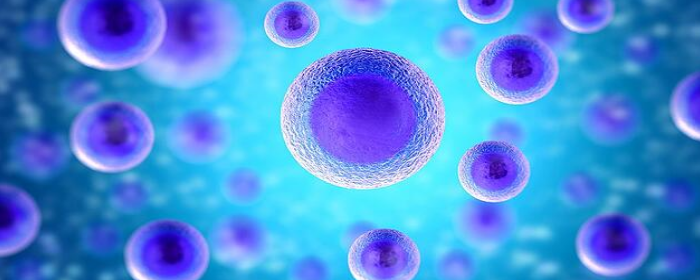
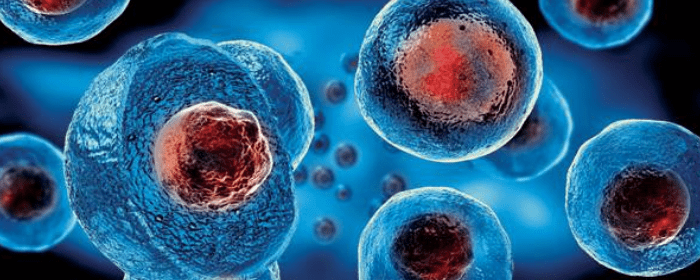
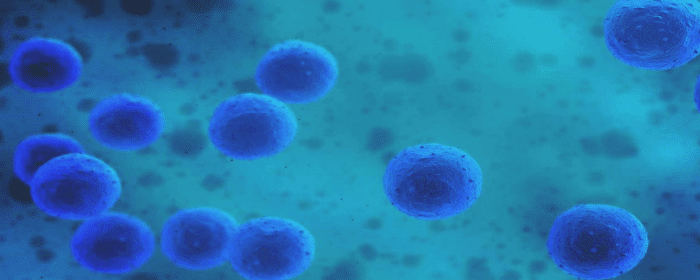
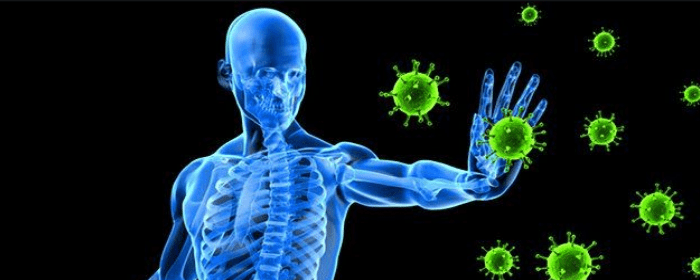
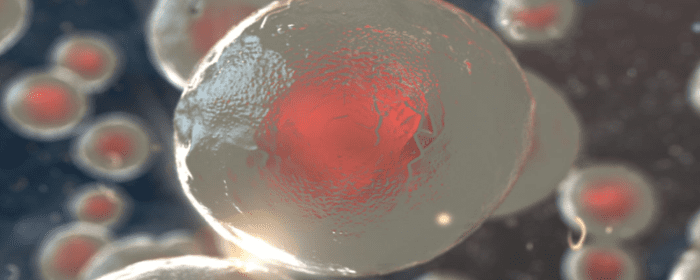
 St. Petersburg, Florida
St. Petersburg, Florida
